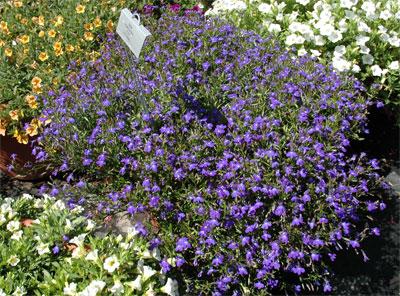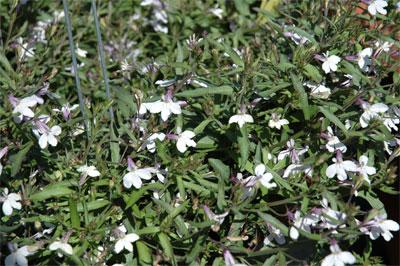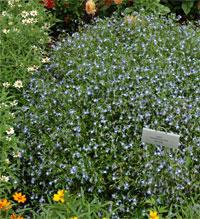Plant of the Month: Lobelia
Techno Heat & Waterfall
Lobelia ‘Techno Heat’ and ‘Waterfall’ series
AT A GLANCE
Latin name: Lobelia erinus ‘Techno Heat’ and ‘Waterfall’ series
Common name: Lobelia
Flowers: Blue, white or pink
Mature height: 10” tall with 2’ spread
Hardiness: Early spring annual
Soil: Well-drained
Exposure: Full sun
Water usage: Medium
Sources: Local nurseries
Few flowers are as blue as the pure electric blue of lobelia. Unfortunately for us Texas gardeners, lobelias historically just haven’t been great plants for our high-heat climate. Luckily, in the Dallas Arboretum Trial Gardens, not only do we test the newest and weirdest plants, but we also search for the absolute best varieties of familiar plants that will take our extreme climate. For the last few years we have been testing lobelia varieties, searching for cultivars that will last at least from early March until late May. I figure if we can get three months of flowers from a plant, then it is worth the trouble to bring it home.
One thing we discovered quickly was that cutting-grown varieties were much tougher, grew larger, flowered longer, and handled the heat better than the cheaper, smaller, seed-grown varieties. So when you are at the nursery and can’t remember what variety to buy, just look for the ones growing in the larger pots or trailing over hanging baskets. They are usually of the vegetatively grown varieties.
The two best series in our trials for the last three years have been ‘Techno Heat’ and ‘Waterfall’. Both of these come in multiple colors, and grow to about the same size. I like to use them in pots, baskets and window boxes more than in ground plantings. Make sure to plant them in full sun to light afternoon shade and in well-drained soil.
This isn’t an all-summer flower, but one to help soothe that spring itch to buy plants for the garden in early March. Lobelia makes a great filler until the weather warms up enough to bring out the really heat-tolerant plants.



